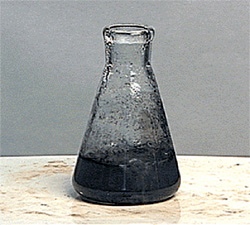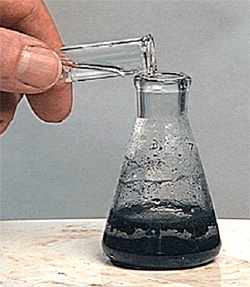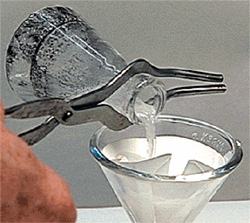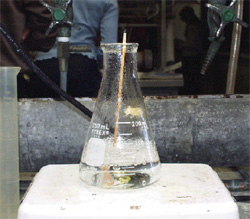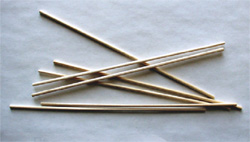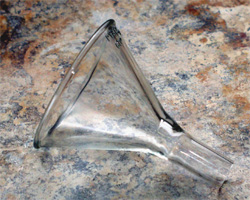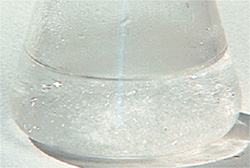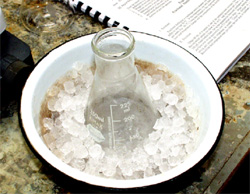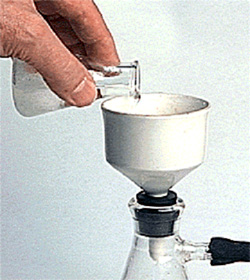 |
Chemistry
233
|
Experiment 2: Recrystallization
Summary
You will be learning several techniques for purification of organic compounds. One very effective way to purify solids is through recrystallization. In this experiment, you will be given an impure sample of benzoic acid that you will purify by recrystallization. You will also determine the melting point of the recrystallized benzoic acid to assess the purity.
| Impure sample of benzoic acid. | 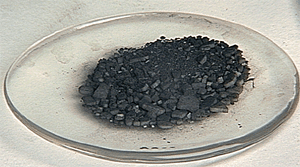 |
| Benzoic acid after recrystallization. | 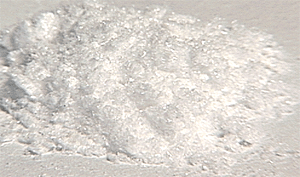 |
Procedure
The procedure for recrystallization is found in your text, page 96. You will make the following changes to the procedure:
1. Scale up the procedure so that it accommodates 2 grams of benzoic acid.
2. Weigh the sample of impure benzoic acid before you begin recrystallization.
3. Skip the "Decoloration" section.
|
Heat the sample with enough water to dissolve all soluble material. |
|
|
Add more water if needed. |
|
|
Filter the hot solution to remove insoluble material |
|
|
Boil off some of the water. |
|
|
Use a boiling stick when you boil off the solvent. |
|
|
Be sure to use the GLASS powder funnel for your hot filtration rather than the plastic funnel. |
|
|
Crystals form as solution is cooled. |
|
|
Cool to complete crystallization. |
|
|
Filter, wash, and dry the product. |
|
Note: You will need a total of 40-50 mL of water for this experiment. If you add too much water you can boil some off after filtration.
Formal Report Requirements
In addition to the requirements listed in the formal lab report handouts, your lab report should include the following:
1 . References to procedure with any changes noted
2. Weight of recrystallized benzoic acid
3. Percent recovery of benzoic acid
4. Melting point of recrystallized benzoic acid and literature melting point
5. A description of the purified benzoic acid
6. Interpretation of data
7. Conclusion: discuss purity, recovery, and overall effectiveness of recrystallization
.
